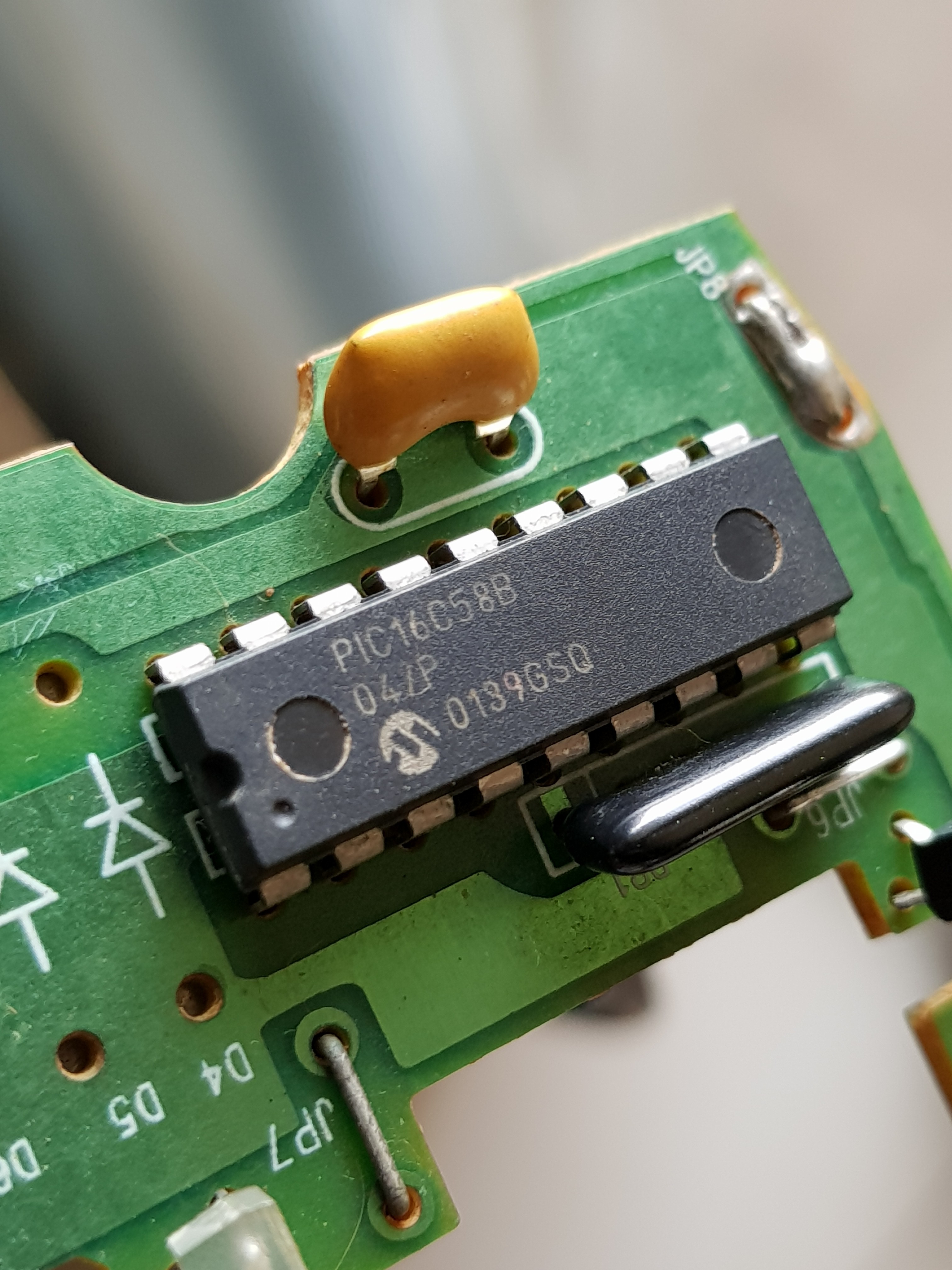-
Weird PS/2 mouse
12/31/2022 at 18:07 • 1 commentWhat is PS/2?
The PS/2 (Personal System/2) port, also referred to as the mouse port or keyboard port, was developed by IBM. It is used to connect a computer mouse or keyboard to an IBM compatible computer. The PS/2 port is a mini DIN plug containing six pins and is still sometimes found on all IBM compatible computers.
Came across a PS/2 mouse.
![]()
The mouse controller is PIC16C58!
![]()
Touch or pressure sensor covered by US5431064A patent
A pressure sensitive transducer array in which a plurality of transducers are connected in series and in parallel with one another. In one embodiment, a resistive layer is formed from carbon or silver ink on a polyester film. A plurality of conductive shunt elements having greater conductivity than the resistive layer is formed on a second polyester film. The films are placed adjacent to one another with the shunt elements contacting the resistive layer. Voltage is applied across the resistive layer and pressure is applied thereto. As the pressure increases, the number of current paths set up through contact points on the shunt elements increase thereby decreasing the resistance across the resistive layer and increasing current flow. In another embodiment a plurality of plate elements are contained in a plane on one side of a dielectric layer. A plurality of plate elements are contained in a plane on the other side of the dielectric layer. As the layer is pushed together responsive to force applied, total capacitance as measured across the planes of plate elements varies.
![]()
Sensor bottom view
-
UPC barcode generator
12/23/2022 at 11:00 • 0 comments000 REM UPC/EAN CODE GENERATOR 010 DIM p$(29), c%(12), q$(9), m%(100) 020 INPUT " Enter the Number : "; u$ 030 FOR i% = 0 TO 9 040 READ n$, s$ 050 n% = ASC(n$) 060 s% = ASC(s$) XOR &H3F 070 WHILE n% <> 0 080 p$(i%) = RIGHT$(STR$(n% MOD 2), 1) + p$(i%) 090 p$(i% + 10) = RIGHT$(STR$(n% MOD 2 XOR 1), 1) + p$(i% + 10) 100 p$(i% + 20) = p$(i% + 20) + LEFT$(p$(i%), 1) 110 q$(i%) = RIGHT$(STR$(s% MOD 2 + 1), 1) + q$(i%) 120 n% = n% \ 2 130 s% = s% \ 2 140 WEND 150 NEXT i% 160 FOR i% = 0 TO 11 170 c%(i%) = VAL(MID$(u$, i% + 1, 1)) 180 X% = X% + c%(i%) * (((i% + 1) MOD 2) + (3 * (i% MOD 2))) 190 NEXT i% 200 c%(i%) = (10 - X% MOD 10) MOD 10 210 FOR i% = 1 TO 6 220 l$ = l$ + p$(VAL(MID$(q$(c%(0)), i% + 1, 1)) * 10 + c%(i%)) 230 r$ = r$ + p$(c%(i% + 6)) 240 NEXT i% 250 f$ = "606" + l$ + "06060" + r$ + "606" 260 KEY OFF: SCREEN 2 270 PRINT LEFT$(u$, 12) + RIGHT$(STR$(c%(12)), 1) 280 GET (0, 0)-(13 * 8, 8), m% 290 SCREEN 11: CLS 300 REM PAINT (0, 0) 310 PUT (15, 35), m% 320 FOR i% = 1 TO 95 330 b% = VAL(MID$(f$, i%, 1)) 340 LINE (20 + i%, 5)-(20 + i%, 25 + b%), SGN(b%) XOR 0 350 NEXT i% 360 WHILE INKEY$ = "" 370 WEND 380 KEY ON: SCREEN 0 390 END 400 DATA r,?,f,4,l,2,B,1,\,",",N,&,P,#,D,*,H,),t,%
My Projects
My Pages
Projects I Like & Follow
Share this profile
ShareBits
Become a Hackaday.io Member
Create an account to leave a comment. Already have an account? Log In.
Mitsuru Yamada
wrote 05/10/2023 at 01:35
•
point
Thank you for following my projects! I am committed to recreating basic digital computer technology and analog technology circa late 1970s.
 mit41301
mit41301


 MS-BOSS
MS-BOSS CheeenNPP
CheeenNPP Mitsuru Yamada
Mitsuru Yamada Burkhard Kainka
Burkhard Kainka Dr. Cockroach
Dr. Cockroach Stephan Martin
Stephan Martin Kuba Sunderland-Ober
Kuba Sunderland-Ober Rudraksha Vegad
Rudraksha Vegad CustomElectronics
CustomElectronics Ted Sheflin
Ted Sheflin

Thank you for liking and following my #CMOS Homemade Operational Amplifier ! This project made me realize the characteristics of MOSFET semiconductors in my own way.